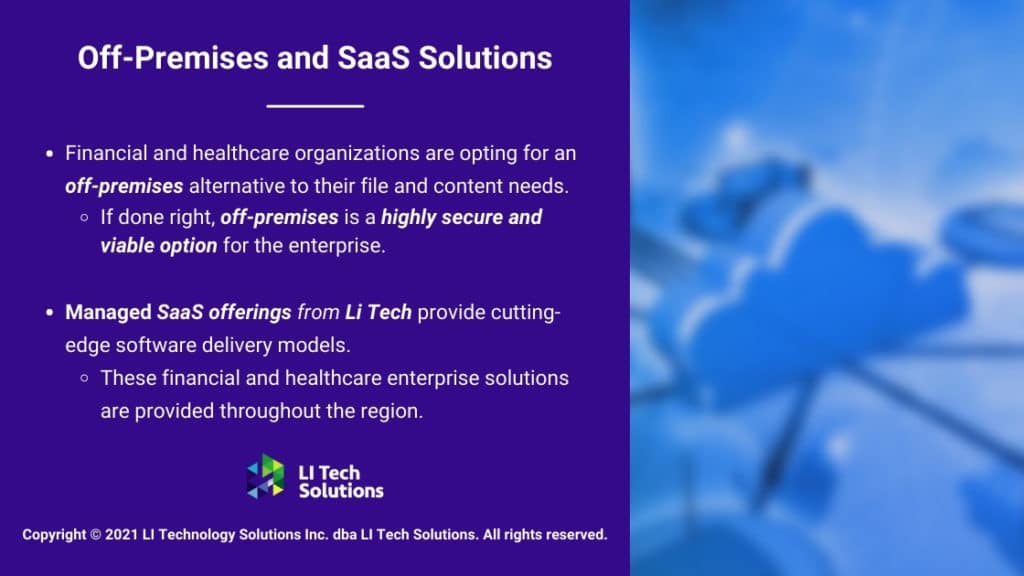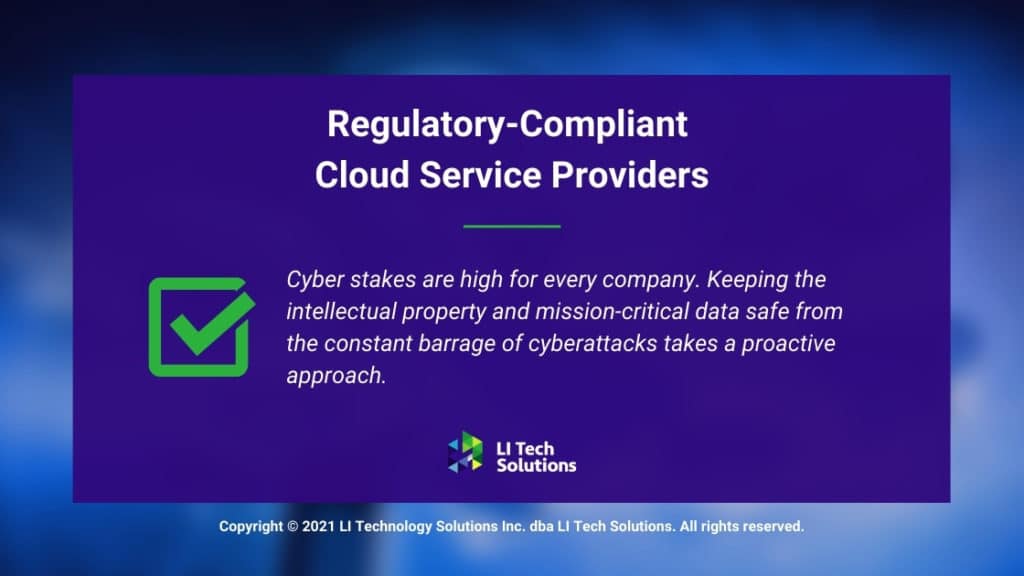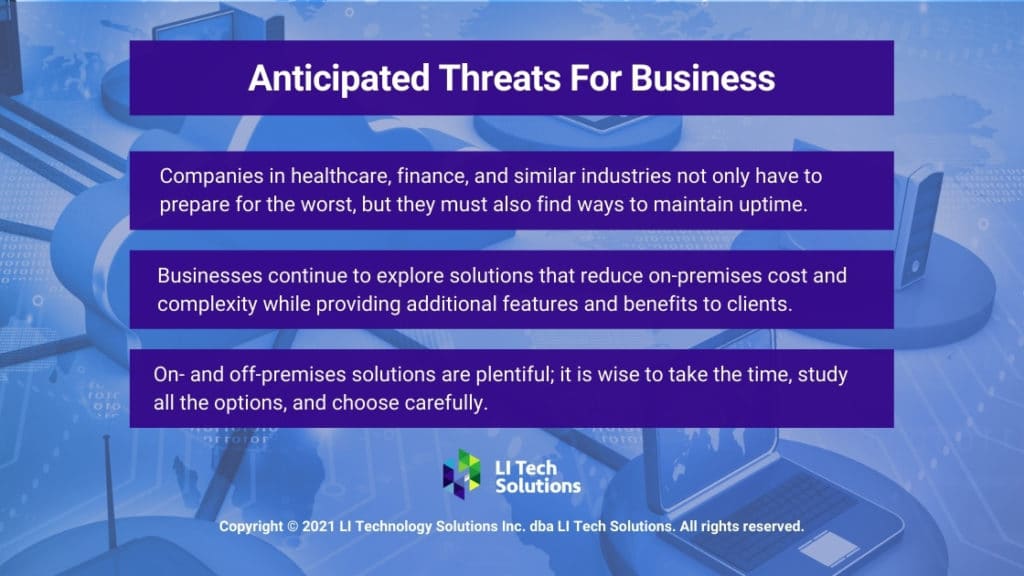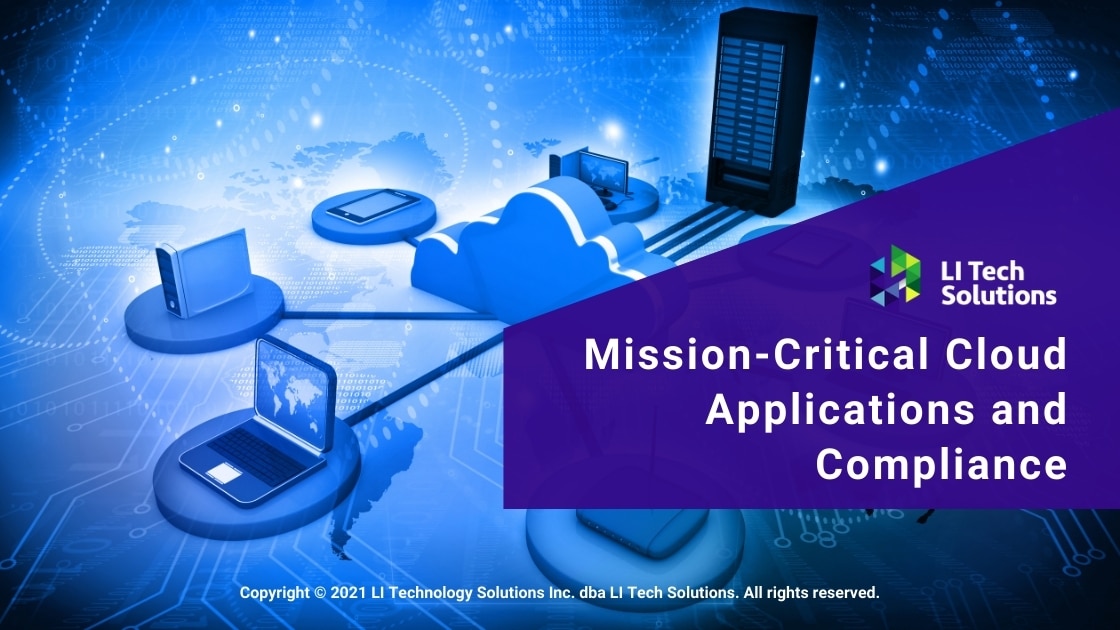Mission-Critical Cloud Applications and Compliance
Cloud infrastructure is a critical component to millions of businesses. No longer are sensitive data and applications relegated to on-premises solutions. According to the Cloud Security Alliance, 69% of enterprises around the globe are rapidly moving mission-critical and sensitive data to the cloud.
With a massive migration, regulatory compliance has become part of the foundational focus for the modern enterprise. Data-sensitive industries such as healthcare and financials must continually be on the alert for non-compliant system behavior.
Moving data from an on-premises solution to the cloud forces an organization to re-examine compliance issues. How that data is kept so that it remains in conformance with current laws and industry regulations is a critical element.
Off-Premises and SaaS Solutions
Financial and healthcare organizations are opting for an off-premises alternative to their file and content needs. Shifting to off-premises can be a difficult choice for companies. However, if done right, off-premises is a highly secure and viable option for the enterprise.

The Benefits of Mission-Critical, Off-Premises File Servers | Long Island Tech Solutions Highlights
-
- Cost-Effective: Less on-site hardware and personnel needed to maintain the equipment
- Scalable: Pay only for what is needed
- Anytime/Anywhere Access: A perfect solution for health and financial accounting personnel
- Authentication and Encryption: Data is secure with encryption keys kept on-premises
- Regular Backups, Software Patching
- Virus, Spam, and Malware Protection
- Managed by a Professional Third-Party
SaaS
Businesses of all sizes in the Long Island and Brooklyn area have come to rely on advanced IT firms similar to Li Tech Solutions. Managed SaaS offerings from Li Tech provide cutting-edge software delivery models. These financial and healthcare enterprise solutions are provided throughout the region.
Li Tech’s advanced software-on-demand and other similar services are offered with the help of Microsoft Azure, a world-leading, cloud-hosted enterprise.
Regulatory-Compliant Cloud Service Providers | Stay Compliant with New York’s Best MSSP
Cyber stakes are high for every company. Keeping the intellectual property and mission-critical data safe from the constant barrage of cyberattacks takes a proactive approach.
Sensitive data and core applications drive the organization. Protecting this critical information requires affirmative and dynamic leadership.
Compliance for highly-regulated industries is a big target for cybercriminals because of the enormous payoffs they offer.
The Gramm-Leach-Bliley Act set the foundation of financial compliance for cloud and on-premises solutions. The Act aims to safeguard sensitive financial data for its customers. Storing personal and financial information downstream has broad implications for Cloud Service Providers.

LI Tech cybersecurity experts expect more attacks due to the following conclusions:
- More attacks on critical infrastructure are coming due to the widespread emergence of disparate remote networks.
- Mission-critical breaches will expand because of hastily adjusted business mechanisms which leave wide security gaps for attackers.
- New and more efficient email phishing attacks are growing. More mission-critical data is going into the attacker’s accounts.
- Expect growth in state-sponsored attacks and industrial espionage. These attacks will concentrate on the sensitive data intellectual properties companies possess.
- Machine learning and artificial intelligence are attractive targets to cybercriminals. AI and ML technologies are closely linked to business automation methods.
- The growing development of ransomware is expanding in the financial sector. Attackers will continue to target high-profile victims.
Companies in the financial industry should be selective when choosing a provider. CSPs should have a variety of physical and administrative safeguards in place. Another feature to consider with a CSP is data encryption. The CSP should be using at least a 128 Blowfish algorithm. SSL, with symmetric cryptography, keeps customer data safe while in transit to the cloud.
Anticipated Threats For Business
Companies in healthcare, finance, and similar industries not only have to prepare for the worst, but they must also find ways to maintain uptime. Enterprises must remain open throughout every cyberattack while providing seamless services to customers and staying fully compliant.
Businesses continue to explore solutions that reduce on-premises cost and complexity while providing additional features and benefits to clients. On- and off-premises solutions are plentiful; it is wise to take the time, study all the options, and choose carefully.

Contact Long Island Tech Solutions | Most Experienced MSSP in New York City
Cyber vulnerabilities and risks continue to grow for businesses of all sizes. Modern-era companies need to be intelligence-driven and response-ready.
Effectively integrating cloud and outsourced services through Managed Security Service Providers has become critical to a successful organization. Cyber threats and attacks continue to challenge governments and businesses around the world.
Li Tech Solutions offers clients in Long Island and Brooklyn the mission-critical services every business needs to succeed. The phenomenal growth of Managed security service providers (MSSP), such as Li Tech Solutions, has the needed countermeasures to contain cyberattacks.


